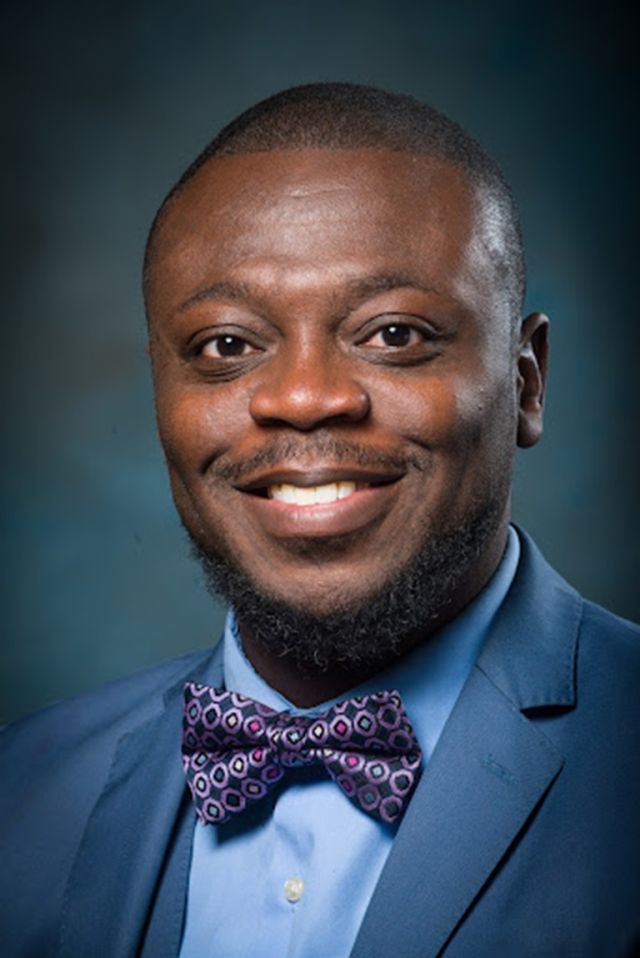Folarin Erogbogbo, Ph.D., Associate Professor, San Jose State University, NoLapse: A Novel Stoma Prolapse Prevention Device

Speaker:
Folarin Erogbogbo, Ph.D.
Associate Professor, Biomedical Engineering Department
San Jose State University
Faculty Host: Beth Pruitt
Title: NoLapse: A Novel Stoma Prolapse Prevention Device
Abstract:
Background: Stomal prolapse is a common complication of ostomies, with at least 100,000 incidents per year in USA. Prolapse can result in pain, bowel obstruction, and ischemia, has a high rate of recurrence after reduction, and can require urgent surgical revision. Currently, there are no non-invasive methods for prevention of initial or recurrent stoma prolapse. We developed a novel non-operative device, NoLapse, for prevention of stomal prolapse. Here, we demonstrate safety and efficacy of the NoLapse in device a large animal model and infants and adults with ostomies.
Methods: A proof-of-concept device was fashioned from FDA-cleared medical tubing and sutures. The device consisted of two gastroschisis silo rings, one sitting below the fascia and one at the exit of the ostomy, connected by a central rod and polypropylene sutures (Fig 1A). The makeshift device was successfully inserted into the stomas of infants and adults for emergency treatment of recurrent stomal prolapse. Subsequently, a prototype barbell-shaped device (NoLapse) was molded out of semi-flexible, biocompatible silicone and sterilized via autoclave (Fig 1B). In a sheep model, a colostomy was created and manually prolapsed then reduced, followed by device placement. Dislodgement force was measured with a force gauge. Animals were monitored for obstructive symptoms, bleeding, and dehydration. Stoma were excised after 1-2 weeks for histopathological evaluation to assess intestinal mucosal injuries.
Results: Four infants and one adult had the proof-of-concept device inserted for recurrent stomal prolapse (duration 1-195 days, Fig 1C-D). There were no adverse events related to device insertion, and no clinical evidence of obstruction, recurrent obstruction, mucosal irritation, or bleeding for the duration of device use. The device did not interfere with ostomy appliance placement. The prototype silicone NoLapse device was inserted in two sheep for 1-2 weeks. The minimal pulling force required to dislodge the device was 12 newtons, however the device was easily removable when the rings were folded. No obstruction of stool passage or expulsion of the device was noted over the study period. Gross and histopathologic examination of the stoma and distal bowel post-necropsy noted no mucosal damage.
Conclusion: The NoLapse is the first indwelling, non-operative device for prevention of initial and recurrent stomal prolapse. We have demonstrated preliminary safety and efficacy of the device in both a large animal model and humans. Next steps include finalizing design specifications including sizes and a sizing kit, and initiation of a pre-approval clinical trial in adults.
Bio:
Folarin Erogbogbo is an American chemical engineer, scientist, and Associate Professor at San Jose State University. He earned his Ph.D. in Chemical and Biological Engineering from University at Buffalo (SUNY) in 2009. His dissertation was titled, “ Silicon Quantum Dots and Biophotonic Applications Thereof”. His teaching contributions have been to three distinct programs: chemical engineering, materials engineering, and biomedical engineering. Erogbogbo is a recognized and well-cited researcher in nanotechnology1–3, especially in the fields of nanoparticles and cancer applications. Erogbogbos' publications have been cited 3000 times His work is considered pioneering in nanotechnology for biomedical and energy applications because of his demonstrations with quantum dots on the nanoscale. Erogbogbo was funded by the National Science Foundation to work with Swihart to demonstrate the first targeted imaging of pancreatic cancer with silicon quantum dots4. While funded by the Ford Foundation, Erogbogbo developed a non-toxic form of quantum dots and demonstrated their potential utility in multiple biomedical applications1–4 including, but not limited to, cancer imaging, drug delivery, and magnetic resonance imaging. Erogbogbo developed the first herringbone-patterned 3D-printed reactor for nanoparticle synthesis6,7. This reactor enables the creation of nanoparticles in a repeatable and reproducible manner. He has also worked in the social sciences areas to establish a cross-college collaboration between the biomedical engineering department and the Departments of Public Health and Sociology to provide technical social interventions that address health challenges in minority men. He has served as the chair and organizer of multiple nanotechnology symposia in the bay area. These include Symposia titled: Nanoscience at the Molecular Foundry ; Nanotechnology in Biosystems, Medicine and Health ; Nanotechnology for Energy, Healthcare and the Environment. As part of his international work, he organized a Diaspora Day Medical Panel in Nigeria. As a Technical Advisor, he supervises or has supervised projects at many different locations in Silicon Valley. The Silicon Valley locations include companies at Jabil Blue Sky, Covance, IRIS vision, Bioventrix, and Nutek Bravo. He has served as a technical advisor for over 50 Projects. He has also supervised projects that were executed at the Stanford School of Medicine and UCSF Department of Anatomy. Erogbogbo has received multiple awards for his mentoring work with students from underrepresented minority groups. He served as the Faculty-in-Residence for the black scholars' floor at SJSU where he developed multiple initiatives to improve academic performance and social impact. He is also the advisor for the SJSU Black Alliance of Scientist and Engineers and the Nigerian Students Association Organization. He has served on committees in the Biomedical Engineering department, the Charles Davidson College of Engineering, the university, and professional organizations. Erogbogbo is a member or has been a member of the following professional organizations: Material Research Society, American Institute of Chemical Engineering, American Chemical Society, National Society of Black Engineers, American Association of Cancer Research, Biomedical Engineering Society, and the Institute of Electrical and Electronics Engineers. Erogbogbo founded Black Engineer Week (www.blackengineerweek.com) in Silicon Valley in 2021. He also Founded BEST at the TECH( www.bestatthetech.com), a partnership with San Jose State University and The Tech Interactive Museum.